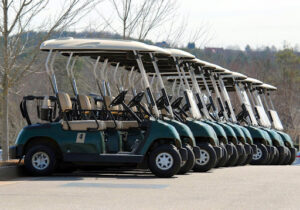The humble golf cart is undergoing a transformation, transitioning from a staple on golf courses to a versatile vehicle with applications beyond the greens. This quiet vehicle, often seen roaming expansive golf courses, is now making its way into neighborhood communities, theme parks, and expansive estates. With improved designs and readily available golf cart parts enhancing performance and customization, what drives this change, and what does the future hold for the golf cart industry?
Technology Integration
The days of the simplistic, bare-bones golf cart are numbered. Today’s models boast features that border on luxury, such as GPS, smartphone integration, and advanced safety mechanisms. This technological infusion addresses the demands of tech-driven consumers who desire a seamless blend of mobility and connectivity in their transport solutions. Voice-controlled navigation systems and climate controls have been introduced, enhancing comfort and user experience. Enhanced diagnostic systems now alert owners to maintenance requirements, thereby extending vehicle life and cultivating confidence in the durability of owners’ investments. There is an ongoing exploration into autonomous features that suggest a not-too-distant future where golf carts could self-navigate designated paths.
Exploring the market of technologically advanced golf carts, new 2025 golf carts exemplify cutting-edge innovations with their luxury electric components and reliable, powerful driving experience.
Green Evolution
While golf carts traditionally relied on gasoline engines, the move towards battery-powered models is unmistakable. As concerns about environmental impacts loom, golf course owners and consumers alike are choosing electric models due to their minimal emissions and quiet operations. This green revolution aligns with broader environmental goals, making it a relevant choice for eco-conscious individuals and businesses. Additionally, advancements in battery technology are enhancing the range and performance of these carts, allowing for longer trips and greater reliability even in diverse terrains. The availability of solar-charging golf carts further supports those wishing for a more sustainable lifestyle. Individuals are now eager to see their golf carts powered by renewable energy sources, reinforcing the trend towards a cleaner future.
Luxury and Customization
A new segment of the market is growing — luxury and personalized golf carts. From custom paint jobs to plush leather seats, manufacturers now cater to those who view the golf cart as an extension of personal style and status. Such bespoke offerings are creating a distinct niche, reinforcing the golf cart’s appeal among affluent citizens in resort-style communities. Increased demand for high-end materials, such as real wood paneling and premium upholstery, signifies a transition toward making golf carts a status symbol. High-tech entertainment systems and refrigerators add a touch of opulence to the humble golf cart, making it a mobile lounge. Artists and designers collaborate to create striking, eye-catching exterior designs that turn golf carts into unique pieces of art on wheels.
Urban Adventures
Golf carts are venturing beyond the course into urban environments. Cities, with their crowded streets and tight parking spaces, are witnessing rising interest in these compact vehicles. They offer a convenient and less intrusive means of transportation, ideal for short commutes. Forward-thinking municipalities even see golf carts easing traffic congestion due to their smaller size and nimble nature. As urban environments grow more complex, the potential for golf carts to redefine last-mile transport solutions becomes more apparent. Innovations in design could lead to models specifically tailored for business use, facilitating urban deliveries with minimal footprint. Community groups are increasingly lobbying for shared golf cart schemes, further showcasing their potential as collaborative urban mobility tools.
Legal Frameworks and Challenges
The expansion of golf cart usage presents regulatory challenges. While some regions have adapted by creating legal frameworks to accommodate these vehicles on public roads, others lag behind. The variability in regulation from one state or country to another remains a barrier to broader adoption. Further legislative efforts are needed to harmonize their usage and optimize safety. Engaging with local governments and stakeholders has become imperative for the industry to pave the way for cohesive rules and safety standards. Road safety campaigns and user education programs are emerging to address safety concerns and ensure that both users and pedestrians remain protected. The prospect of harmonized regulations across regions promises a future of expanded use, offering clearer guidance and optimized processes for all stakeholders.
The Future: From Golf to Everywhere
Reflecting on the trends, it’s clear the golf cart is no longer just a tool for leisure; it’s evolving into an adaptable vehicle for various tasks. From parks to private communities and urban corridors, these vehicles are redefined by function and form. As the industry develops, manufacturers must continue to tailor designs to meet diverse needs, ensuring it remains a relevant choice for transportation innovation. The golf cart now stands as a testament to how traditional products can be reimagined in modern contexts, drastically expanding its circle of impact. The industry serves as an excellent case study in adaptation, meeting the challenges of society’s changing mobility expectations.
